How to Snowshoe: Walking Your Way Out The Snow
When you want to get closer to nature, going for some hike in the mountains will be just the good idea. But for you to enjoy this to the fullest you will need to get yourself prepared well enough, thus you will also need to consider weather of all kinds.
[the_ad_group id=”21″]
Rain, snow, and the sun are among the different types of weather you might encounter. It is always advisable that you prepare adequately as it may protect both your happiness and your health.
For those planning to go to those places with deep snow, planning on how you can go through or walk in such terrain can usually become a bit difficult. Things like the skies can be tiresome to pack. However, this can be made a little easier if you knew how to snowshoe. This will enable you to stay dry and high above the snow.
Snowshoeing History
The practice of snowshoeing has existed now for several years and it has been known to help people cross areas covered with a lot of snow. Trying to cross over these places without the snowshoes will probably get you sunk in the deep snow. People always get covered up to their waists and this usually makes it almost impossible for people to go further.
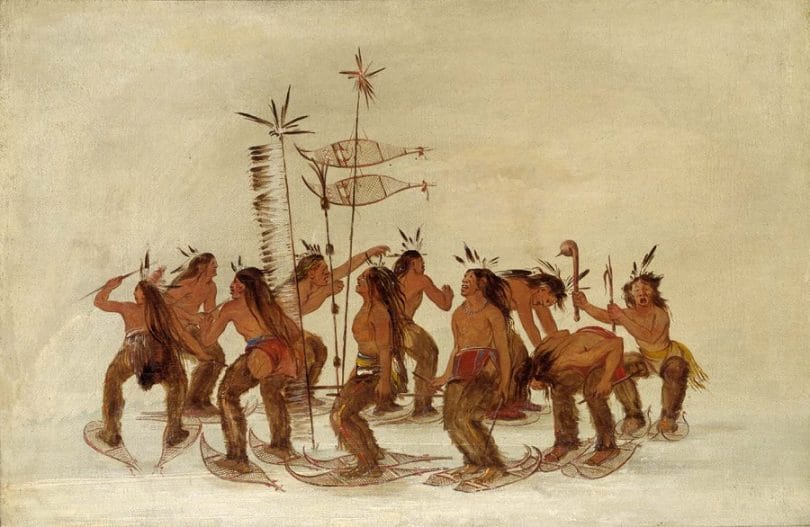
Snowshoes usually work by evenly distributing your weight on the surface you are walking on, thus enabling you to stay on top of the snow and to not sink. But over as time passes by, this has become even more simplified since there are some new shoes with more features that make it even easier to travel on snow.
It’s even been considered as a winter sport, we have seen the emergence of new models of shoes for the sports lines that helps in improving the speed when racing.
Benefits of Snowshoeing
You won’t need a lot of time to learn for you to know how to snowshoe, unlike other winter sports. Learning to snowshoe is very simple and easy. Snowshoeing as a sport is also not expensive since it only needs you to have little equipment for you to start.
For the other sports, you do realize that they do carry the risk of getting injured and overall being in danger, but for snowshoeing you don’t have to worry about that. This sport is usually safe, hence anybody can participate in it.
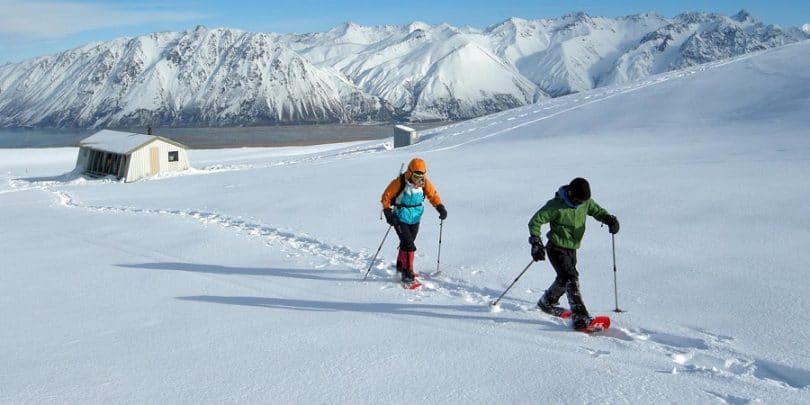
Snowshoeing is also known to be among some of the best cardiovascular exercises that one can do during the snowing months. This can usually come in handy since most people always gain some extra pounds during this seasons thus helping yourself to stay fit and healthy.Snowshoeing as an exercise can usually be very intense and it is said that in just an hour you can burn up to 600 calories. This can be a better way of losing weight for those people who would be interested in doing so.
Finding Yourself The Right Equipment
Before getting involved in these activities, it is always very much important for you to get the correct snowshoes for you. They always come in several different kinds and this will influence whatever you expect to get from it. Snowshoes will always come in three basic kinds.
- Recreational: if you are a first timer, then these are just the correct fit for you. They will always work in simple terrains that usually don’t have many gullies and steep hills.
- Aerobic: for the active snowshoers, these are just suitable for you as they can give you the best experience when using them thus getting the most out of your session. These are most suitable to be used by runners. Compared to the recreational snowshoes, aerobic snowshoes are always much tougher.
- Hiking/backpacking: if you are looking for snowshoes that are tough and are also designed and made to take a beating, then these will be just what you are looking for. They are always made using an aluminum frame and their bindings usually can support all types of boots enabling them to stay on. For more winter backpacking tips, check our earlier piece on this important topic.
When you are looking at these shoes, you will find that the cost generally is inexpensive. The cost ranges from $100 to $300. It is always advisable for you to know the functions that a particular snowshoe has before even looking at how much they cost. Many of the snowshoe’s vendors might even sell you the shoes with a bag and some poles.
This will help you storing them. However, these offers are usually suitable for beginners, but if you want to go on some hiking, you should never use the starter kits at all.
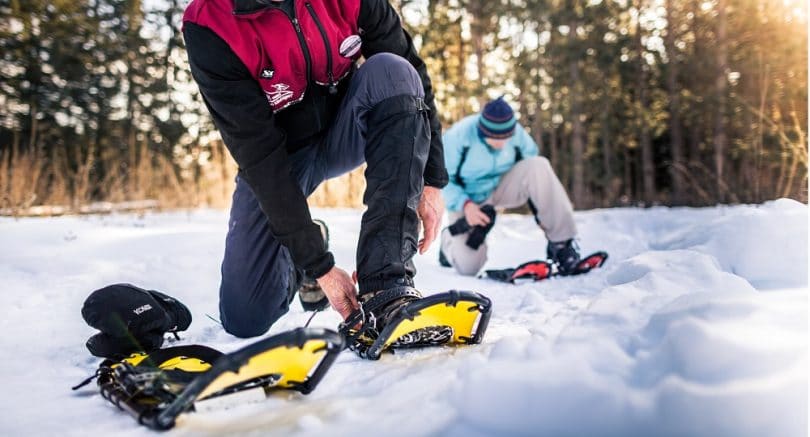
Purchasing already used snowshoes is not such a good idea but if you had already bought some, it is very important that you do a thorough inspection on them. You should do this to check on any damages on the bindings and the frames.
Using shoes that are already damaged can lead to you getting stranded in the snow with no means of help. They can also lead to injuries. Finally, you can also use some helpful charts, usually available in the place you are purchasing your shoes, to pick just the correct snowshoe for you. Do you want to save on money? Why not check out our instructions on easy DIY snowshoes for your reference.
Your weight plus that of whatever you are carrying with you will always determine the size of the shoe. The most common sizes of the shoes you are most likely to get are 25”, 30” and 36”. If you are still getting a little bit confused with all these, you can always seek help from your retailer.
He will be able to help you find your correct shoe size. Also, these shoes can be of different types depending on the snow you are going to face. You will need to tell the retailer the purpose of the use for the shoes, this will make it easy for him to help you.
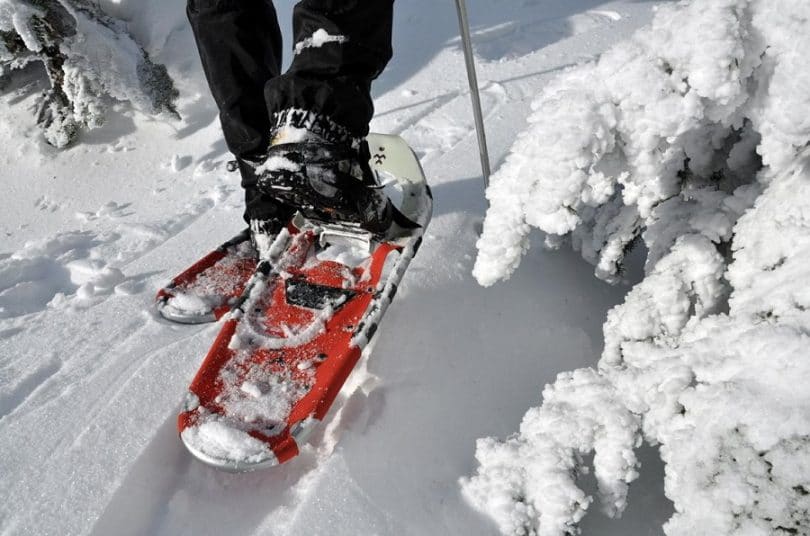
When it is your first time to snowshoe, you will feel like you are just walking on sand on the beach. You will need to lift your leg a little higher when walking. It is always advisable that you first start on flat terrain when trying to get used to the shoes. This will help you to get an idea of how you are supposed to walk with them.
Make sure you also have support poles with you as they will always help you to maintain your balance. When learning, also make sure to start off slowly hence you won’t overexert yourself. After you are getting used to it, you can go ahead and try out new terrains, somewhere uneven or on the hills.
[the_ad_group id=”22″]
When you are walking up the hill, you are required to use your boots toes as this will help you get a good grip. On the other hand, if you are walking down the hill, you will need to lean back. It is best advised in both cases that you walk in small strides. This will help you reduce the risk of falling over due to the loss of balance.
How to Walk in Snowshoes
For you to do this, you must first ensure that the snowshoes you are putting on are correctly attached to the boots. You should see that your boots are put in the right footholds then tighten the straps. Your foot’s ball should just be over the snowshoe’s pivot point. Once you have put them on, walk with wide strands so that you accommodate with your snowshoe’s width.
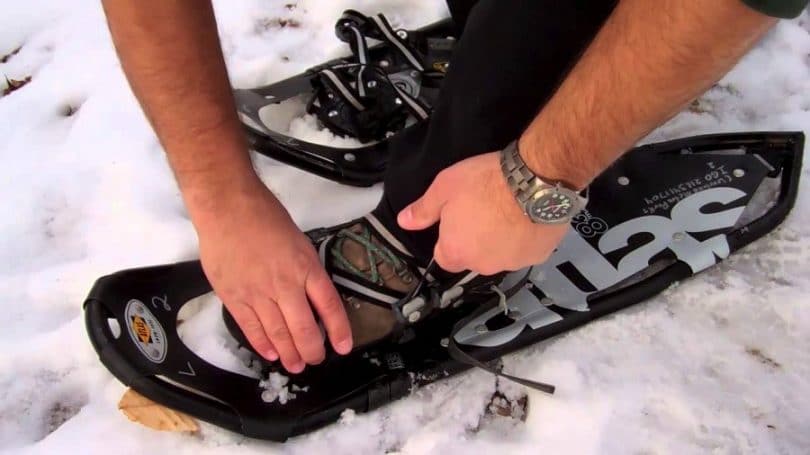
For the first time, this might feel a little uncomfortable but when you do a lot of practice, you will get used to it. You need to walk just like you normally do, lead with your heel followed by resting your weight on your foot’s ball then your toes.
The next step is for you to ensure that your snowshoe’s nose is lifted at a height that will enable it to clear the snow. Make sure that your foot is not lifted much higher because this will only get you tired faster.
For assistance, you can always use the poles thus your first time in snowshoeing will be relatively easy. The poles usually help a lot, especially in the deep snow, just ensure that they have the correct height set. When going up a hill, use your toes to kick the snow thus sinking the crampons down into the powder, this will help you gain a nice foothold.
If your kick doesn’t create a step but creates a deep hole instead, this means that you will need to find another route to go up the hill since the snow you are walking on now is much too soft.

On the other hand, when you are going down the hill, heel crampons might get attached to the snow when leaning backward. You should try to take your time when going down the hill to not lose your balance. Make sure that your legs are not swung in long arcs as this might make you fall and roll down the hill.
For those who will walk alongside the hill, you can make your traveling a little bit easier by using the sides of the shoes. If you want to minimize the risk of you falling then you might consider leaning in the uphill direction.
Precautions that You Need to Take When Snowshoeing
Staying safe has always been an important thing especially when going on an adventure. These are some of the things that you will need to have in mind when you go out snowshoeing for the first time.
- Travel with some friends, this would be a lot safer so that in the case of any emergency, you will not be stuck or stranded alone.
- Try to dress in layers, even though you will be engaged in vigorous activities, you still need to keep warm. Also, make sure that the outer layer of your clothes is waterproof and make sure you have some extra clothes in case the ones you have will get wet.
- Try to avoid ski tracks, this is usually a great idea since when traveling to a popular area where skiers are, you might ruin their trails hence it would be a better idea to walk alongside them.
- Ensure that you take turns when breaking the trail, it is always tiresome for you to make a suitable path for those behind you. This makes it important for people to share this effort thus ensuring the safety of all of you.
- Make sure you stay energized, you should carry with you a lot of water and some high-energy snacks. This will help you when you are tired and want to rejuvenate Snowshoeing is always an exhausting activity and one can really lose a lot of body fluids by sweating.
- Maintain your safety, make sure you check the weather forecast before deciding to go snowshoeing. Make sure you are adequately prepared with a compass. You should have a portable shovel and a beacon. When doing this activity, make sure you are keen and look out for any danger zones.
These shoes will also vary in size depending on what you want to do with them. For instance, the ones that are used for athletics are usually very light and are small in size hence they enable the users to run with a lot of speed. They are not suitable for backcountry purposes.
On the other hand, the snowshoes used for recreational purposes are always a bit large in size and can be used to walk for about 3-5 miles. The ones for mountain climbing are the largest and can also be used for off trail and long distance travels.
See also: Best Cold Weather Gear for Hiking: Prepare to Brave the Cold
We have seen that snowshoeing also has some health benefits, just like any other form of aerobics. This can help you maintain your active lifestyle from the previous months. The benefits you get from aerobics includes maintaining elasticity of your arteries and also lowering your blood pressure.
It is usually said that while exercising, the arteries expand and contracts three to four times or even more. This can help especially in reducing the risk of you facing a heart attack and/or a stroke in the future.
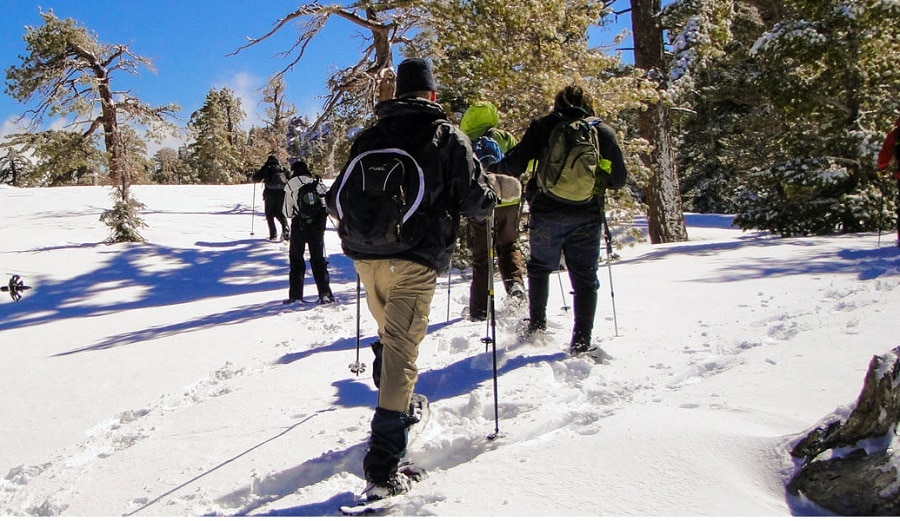
Snowshoeing will make you look better, feel better and also keeping active during the winter. Another benefit you can get from this is that it can help you to slow down aging as you will not be experiencing the muscle and bone loss anytime soon.
The warm ups and the slowdowns that snowshoeing usually requires are just the same as any degree or intensity of your summer cardio activities that you mostly enjoy. This can include things like power walking, a peaceful hike or even a run.
Just like any other sport, you will have to do a few preparations and also take some precautions, with a difference in variation, depending on the distance and the intensity of the snow hike. We also talked about dressing in layers as this is a crucial thing that will help you maintain your body temperature during the entire time.
[the_ad_group id=”23″]
You should make sure that these clothes can easily be slipped into and out off meaning you also need a proper way to store them once you take them out.
You can consider using head hats since it is said that body temperature can also be lost through your head. This is why it is recommended that you have a layered head gear that is small and light. A lot of emphases should be put in the fact that you are supposed to stay hydrated all the time and have a few snacks just for your energy levels.
Conclusion
After reading and going all through this, I hope you somehow got intrigued enough to start thinking about being active during the winter season. I am sure by now you might have done some research on snowshoeing and you have also learned about the benefits you can get from it.
Make sure you are keen when shopping for the snowshoes and ask your retailer about anything when you are not sure. This will help you to avoid buying the wrong things.

Also, a lot of emphases should be put on your body weight plus the weight of your gear. This is what is used to determine the size and the surface area your snowshoes will cover, hence you will be able to immediately narrow your selection when shopping for snowshoes.
For the serious hikers, you might consider the snowshoes that are manufactured by MSR and Atlas. These companies usually have a good selection when it comes to snowshoes. Their products are always more robust for heavy duty purposes and can also take a lot of abuse.
But if your intention is to use the shoes for recreational purposes, then you might consider trying out the snowshoes from Tubbs. They are always less expensive but well made. Buy what fits you and works best for you and enjoy your snowshoeing to the fullest.
Before you head out on to the snow, see our piece on the top camping and hiking gear to keep you safe and warm in icy weather.

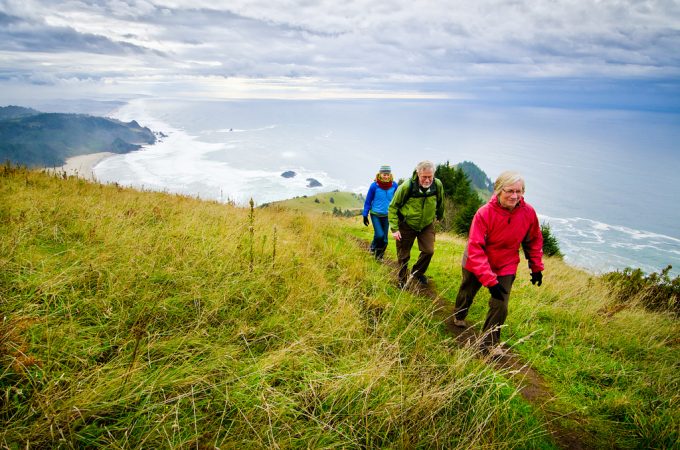
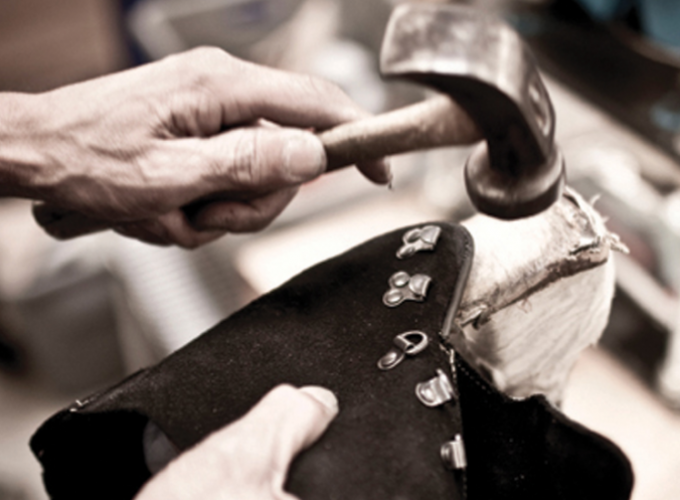

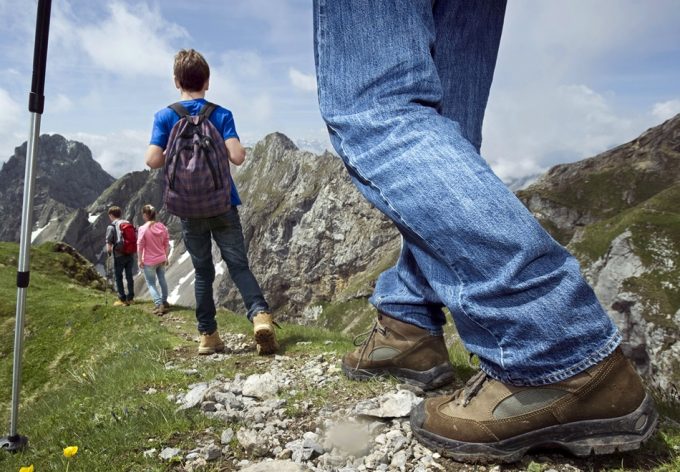
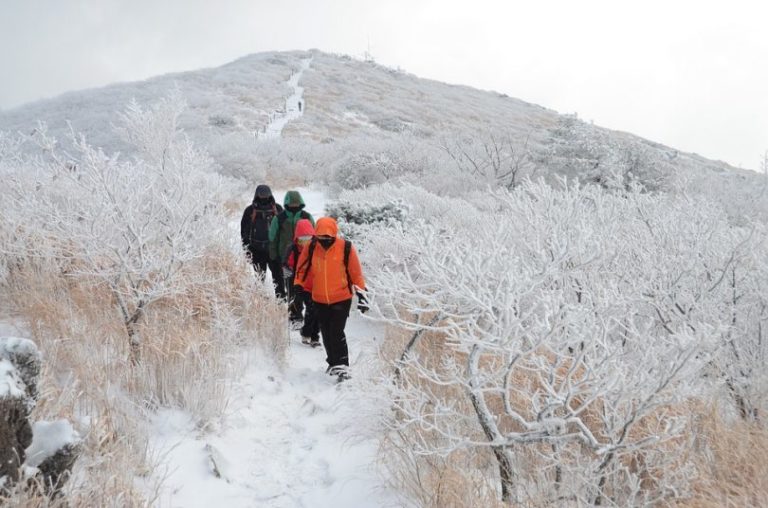
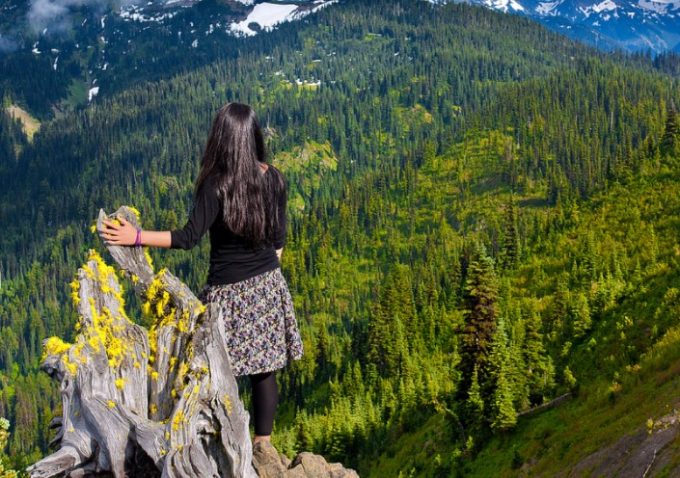
When choosing snowshoes, first you need to pay attention to their area. Naturally, the larger the area, the less you will fall in the snow – the laws of physics can’t be broken. However, there is some optimum in the size of snowshoes making use of more ergonomic snowshoes. Since the width of snowshoes from most manufacturers is approximately 8-9 inches. If they increase the length – the boots won’t feet in a backpack.
Some campers often miss this concept and opt for a less effective snowshoes because it looks better. When buying snowshoes, the bigger surface area, the better because as you’ve said, it will prevent you from slipping or sinking.
When choosing snowshoes, first you need to pay attention to their area. Naturally, the larger the area, the less you will fall in the snow – the laws of physics can’t be broken. However, there is some optimum in the size of snowshoes making use of more ergonomic snowshoes. Since the width of snowshoes from most manufacturers is approximately 8-9 inches. If they increase the length – the boots won’t feet in a backpack.
Some campers often miss this concept and opt for a less effective snowshoes because it looks better. When buying snowshoes, the bigger surface area, the better because as you’ve said, it will prevent you from slipping or sinking.
Actually, no special preparation is required. Travel companies often used the advertising slogan: “If you can walk, you will learn the snowshoes easily”, which is not far from the truth. To walk in shoes in the snow, even dense, hard. At each step, the snow turned from under the feet, under the soles, there are no hard supports, this walk takes a lot of energy. A snowshoe solves this problem and helps to move confidently on the snow. For additional support, you can grab a ski pole, the best choice is a telescopic model.
Thanks for the quick tips, Steve. Although I beg to differ because some can feel a bit wobbly whenever they first try their snowshoes on. Your suggestion about using a ski pole because it does improve stability and traction.
Actually, no special preparation is required. Travel companies often used the advertising slogan: “If you can walk, you will learn the snowshoes easily”, which is not far from the truth. To walk in shoes in the snow, even dense, hard. At each step, the snow turned from under the feet, under the soles, there are no hard supports, this walk takes a lot of energy. A snowshoe solves this problem and helps to move confidently on the snow. For additional support, you can grab a ski pole, the best choice is a telescopic model.
Thanks for the quick tips, Steve. Although I beg to differ because some can feel a bit wobbly whenever they first try their snowshoes on. Your suggestion about using a ski pole because it does improve stability and traction.